

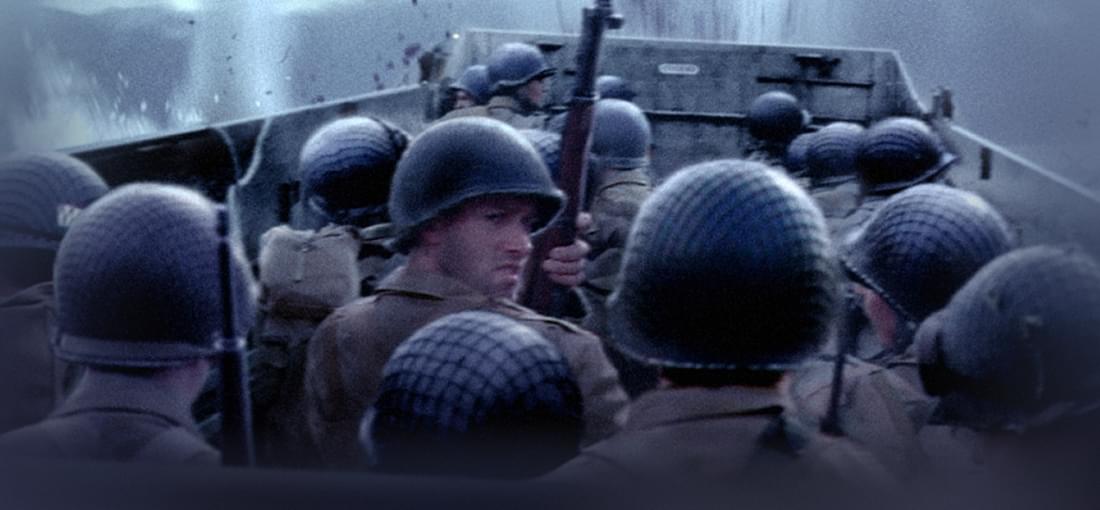
Blast from the past! There's alot to be said about AA, but indeed the best that sums it all up is that its a trip down memory lane. If not directly (as in, you might not have played this game in particular), then surely Allied Assault will indirectly recall those fond memories (as in, the type of game it represents). Allied Assault feels very much a late 90s shooter, a la Goldeneye. Enemies are predictably stupid, spawn in predictable locations, and you could still carry a veritable arsenal and had to rely on health kits to manage health. And yet, these design points, though antiquated now, are very much a breath of fresh air from chest high wall shooting galleries and regenerating health. Scripted sequences in MoH are plenty, but they still afford a semblance of player agency and freedom. It was a burgeoning time for the highly scripted and tightly controlled rollercoaster Call of Duty would perfect. There is a point to say about MoH in relation to its flashier, more technically accomplished sibling. Call of Duty may be the better game, but it is not the superior experience. Call of Duty is jarring and nerve wracking. This isn't to knock a peg off CoD: its simply stating the difference in tone and pacing these two games take. There is always someone yelling at you to do things; there's always grenades flying around, and enemies permanently respawn until you reach a magic marker. In MoH however, the sense of being a commando behind enemy lines is a welcome respite from the noise and chaos of CoD. The game usually lets you go about shooting things at a measured step, rather than dragging you at breakneck speeds. There is time to pause and reflect, maybe even explore a level a bit to find hidden caches of ammo and health. To me, this makes a huge difference. The one time when MoH does violate this however, is during the infamous Sniper Town mission. Enemies are cheaply positioned and death is everywhere. It becomes very CoDish, as in the experience feels very controlled and winnable only from a certain path. Though for my money, the level was so aggravating I had to cheat to get past it, and by that point, there wasn't any point at all in playing. Not even CoD had me sink to such levels (though I'm looking at you, Stalingrad mission and your random-but-not-really mortar-shell-caused-deaths). All in all, great game with (for its time), hugely impressive production values. That soundtrack alone, dear Lord. The comparisons to CoD are inevitable seeing as how 2015 (not EA!) went on to form Infinity Ward. Experience the thrill of seeing helmets fly off when shot at (hugely novel at the time and still the most vivid recollection I have of MoH games--seems a staple to be able to shoot helmets off people).
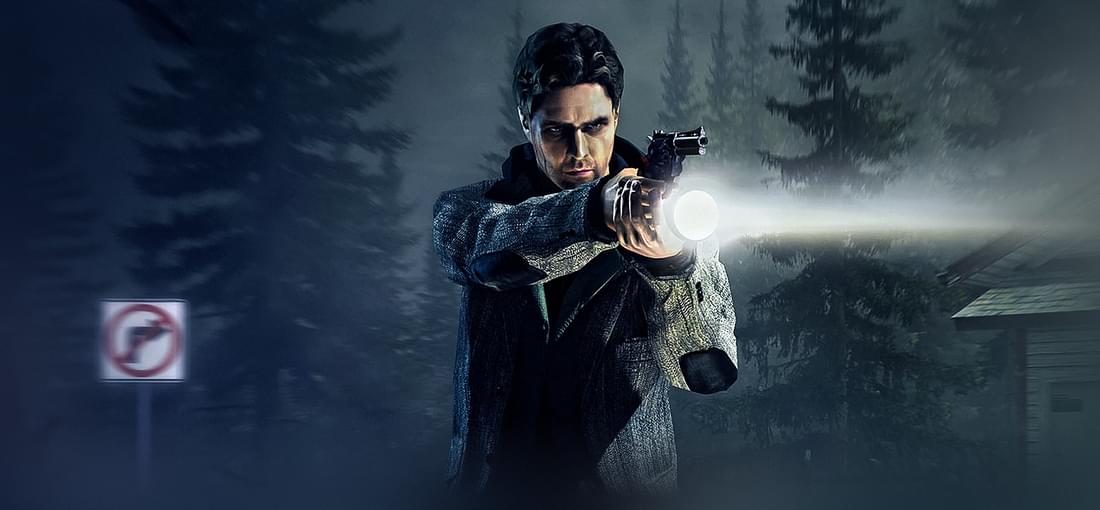
Alan Wake is Remedy Entertainment's first production since 2003's Max Payne 2. A lot has changed in the gaming world since, and there's a decidedly old school flavor to Alan Wake's rather simplistic game play. It's an action shooter dressed as a survival horror adventure, and it often succeeds in the former, but sometimes, it fails. Combat can be exceedingly frustrating. Particularly later in the game, there are sections where it is preferable to escape than fight. Enemies will outnumber you; Alan cannot run very far without stopping for a breather, and when enemies do catch up to you (they are much, much faster), you will get stun locked. This leads to frequent reloads until you understand what the game wants from you: to run more often than not, despite the liberal sprinkling of ammo throughout the forest. With that said, this is a gorgeous game. Remedy has a reputation for pushing the technical state-of-the-art with their titles, and Alan Wake is no different. The PC version of this game is wonderfully optimized, and plays smoothly while loading quickly on my mid-range PC: AMD Quad Core @ 3.0+ Ghz, 8GB DDR3 RAM, GTX 460 1GB, 1920x1080 with everything on High and AA at 4x running off a 7200RPM SATA 2 drive. The game engine is a marvel at creating palpable shadows interspersed with vibrant light and colour. Character models and animation are not top-notch, but photo realistic textures go a long way in looking nice. The environs of Bright Falls are serene and lush when they want to be; harrowing and foreboding when they needs to be. There's a great sense of world building that rings authenticity throughout: from the small details in the immediate space to the bigger picture of scale and unity in design. The Pacific Northwest never felt so believable. This visual splendor is coupled with a generous soundtrack featuring classic jukebox tunes to contemporary alternative rock tracks (Remedy collaborators Poets of the Fall return) which bookend each "episode". The heart of this title though, lies in the story. It's a bit of a convoluted mess all throughout, and slightly cliched, but its gripping and clever as well. Borrowing stylistic and thematic influences from the creepiness of vintage Twilight Zone; the novels of Stephen King; David Lynch's Twin Peaks; and even John Carpenter's 'In the Mouth of Madness', Alan Wake maintains Remedy's penchant for post-modern, pop-culture referencing pastiche, served up in a pulp fiction that's a bit undercooked, but fascinating all the same.
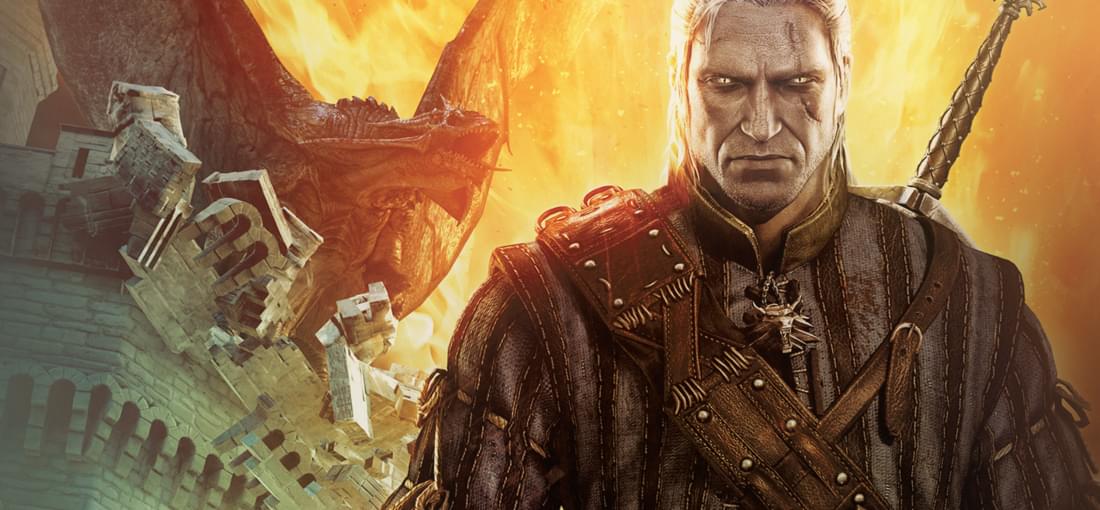
Playing through my first time with the v2.0 patch (Chapter 3) Have bought the game twice to support CDPR, once retail, second time on GOG. Have played through the first game once and hold it in a similar light. Here are my thoughts in (somewhat) short form. The good: Great aesthetic sense. Not only are the graphics technically astounding, they also evoke the low-fantasy setting wonderfully: this is not a beautiful game in the conventional sense. The setting and its characters are not designed to instill awe and wonder. The environs are more muddy than fantastical; its architecture more practical than fanciful; its inhabitants are often grubby, sometimes good hearted, many times superstitious, and almost always self-centered. This is a very colourful game, one that distances itself from the generic fantasy trappings of its peers with its tone, its palette, and its ability to take itself seriously as a mature tale while demanding that you do the same. The plot concerns political intrigue, and for the first time we see the world of the Witcher expand to include the Northern Kingdoms heretofore only mentioned in lore books. In short, its a more involved quest-line than usual for games of this sort, one that has makes more sense and impact than a generic "save the world" arc. The idea of multiple loyalties and perspectives in the continent-wide conflict is reinforced in The Witcher 2's radical decision making branches and by letting you play as different characters in some scenes. Most dialogue options will have admittedly negligible consequences for side-quests, but not so come Chapter 2: you'll be playing an entirely different second-half depending on your choice of ally. The Witcher 2 tells its story in a refreshing fashion. These are its strengths, in addition to other improvements over the original game that I won't mention here. It's the flaws of the Witcher 2 that keep it from achieving 4+ stars. As a game, one that seeks to entertain before all else, it falters in some niggling, but persistent issues. Some are engine-related: Doors only opening for one person at a time is silly; looting crates can be awkward depending on the angle you're facing; some audio drop-ins and drop-outs; persistent mouse lag on game menus, etc. More importantly, some are design related: 1) While I appreciate the aspect of Geralt having to prepare ahead of time for battles, you often initiate combat without warning and without time for preparation, not without reloading a quick save you made yourself (not enough checkpoints). I don't mind having to drink potions before battle, just give me better indication for when I'm going to fight. 2) A very attractive and mostly functional menus, but 'mostly' can be improved. Many have complained about this too, so I won't reiterate as it wasn't a huge issue. 3) A very attractive and somewhat functional map. Sometimes the waypoints get confusing (Do I go to point A or point B first?) or don't update properly (I thought I was just at point A?). 4) Though I suspect Version 2.0 alleviated some of this, much of the game's mechanics can still be poorly explained (this is where the "oldschool RPG" cred comes in, I suppose) Concluding: For everything it does wrong, TW2 does two if not three things right. It is still a wonderful game, and one that with much more QA testing could be excellent.
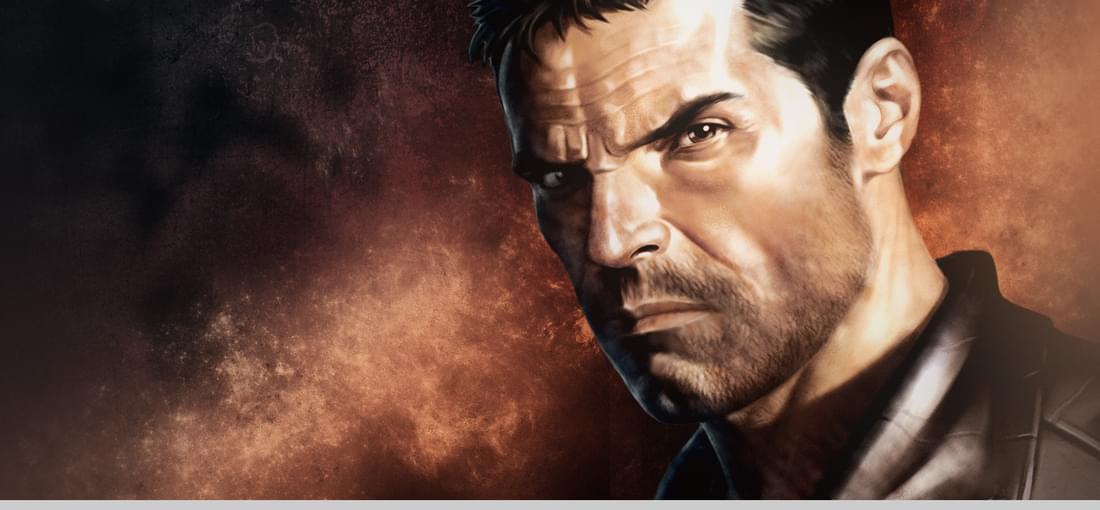
Painkiller is the rightful successor to both Doom and Quake. It features the former's high body count and frenetic pace, and it delivers on the latter's emphasis on quick gunplay and even quicker movement control. What you end up with is a truly potent concoction of guts and blood, heavy metal musak, spacebar mashing ("hua-hua-hua!" grunts the FPS Guy) and generally dying quite a bit - even on the normal difficulty of Insomnia. Fans of tactical shooters or even the recent spat of cover-based, pot-shot taking titles need not apply. This is a game from another era, from a more "hardcore" heritage of FPS, and for that I salute it. None of this would be worth a dime if it weren't executed with such pomp and precision. It's a bloody rave, to be sure, but its all done very well. From the gorgeous, expansive environments where you'll seamlessly frag one corridor to the another, the game never lets up on the visual front. There are Gothic cathedrals aplenty; there are abandoned train stations; there are dark and stormy asylums; and even opera houses to name a few of the eclectic level design examples. And with controls as tight as these, how you maneuver through these murderous corridors can be as artful or as haphazard as your skill with the keyboard and mouse will allow; either way, you'll have a blast. The guns are a decidedly original bunch, even in a genre as rooted in tradition as the 'oldschool FPS'. You have your ranged railgun-like stakegun, you have your bread and butter shotgun, you have your rocket launcher, your lightning gun, your grenades and your melee weapon. Painkiller's somewhat original contribution to these archetypes lie in the secondary fire mode. You can seamlessly chain attacks for fanciful execution and/or whenever the situation calls for the appropriate tool. Hairy areas (and especially harder difficulties) will require you to become a master of all the weapons; there is no extraneous addition to the arsenal, as everything has its use and all are extremely satisfying to employ. This is, after all, the game with the "gun that shoots shurikens and lightning." What more could you want? There's also the addition of one-shot abilities you can bring in each level, the Black Tarot cards, but these rarely see use in the earlier stages of the game and collecting them are rather difficult (beat x level with y and/or z conditions). You also occasionally turn into At the end of the day, this is a game for every action fan, so long as your tolerance for motion sickness will allow you to play it. It almost feels as if the developers borrowed from another great actioner: Diablo 2. This game does indeed feel like the love child of Quake, Doom and D2. This is a good thing. For what it's worth, there are some faults with the game, keeping it from the impossible 5 star review: - There were some frequent crashes in some levels of the game. Not sure if this has to do with Win 7 64-bit, but it seems frequent quick-saves will screw you over with scripting errors. That's okay, though, as the save checkpoints (blech! I know?) are frequent. The worst you'll have to do is reload from a slightly earlier save. Just don't mash F5 too often, and have multiple saves ready. - Enemies do take forever to give up the ghost, so to speak. So if you're relying on those souls for health and to fuel your demon form, this will break gameplay somewhat. - While the physics engine is neat, it does present some problems. You'll be circle strafing and otherwise maintaining a decent speed until a piece of doorframe or a downed enemy body stifles your movement. - Hit detection is either extremely accurate or spotty: as enemies zigzag along or fiddle about in their attack animations, many of your more precise weapons (ie. stake gun) will miss by a hair. This could be entirely my (lack of) aim, but you'll often find projectiles going through their legs or over their shoulders or under their armpits. Again, this is either some amazingly accurate hit detection or the game simply refuses to let me snipe baddies from afar with my stake gun, forcing me to mid-range it. - You can't rocket jump in single-player; at least, not that I've successfully done. Blasphemy!
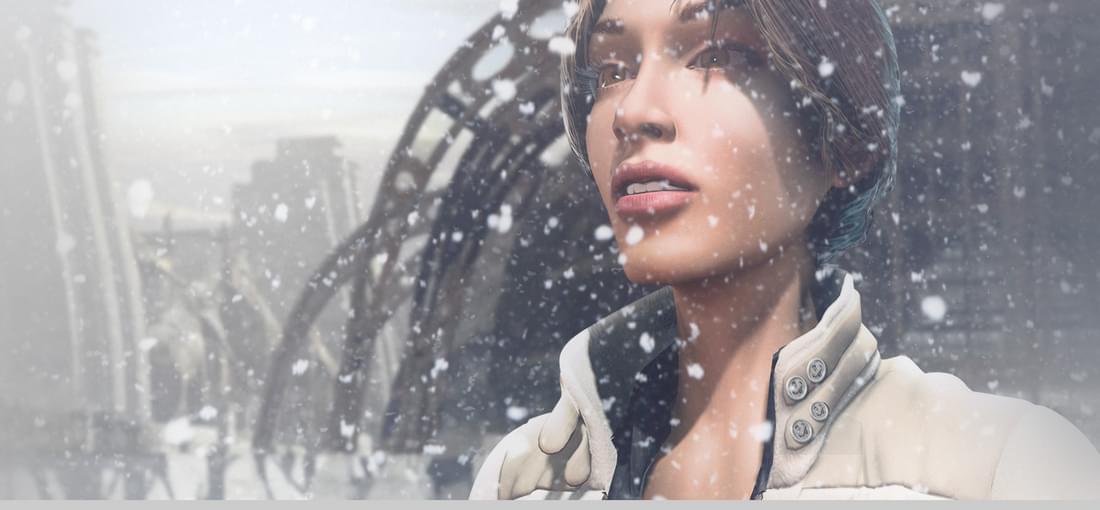
This is one of the things I had to ask myself before stepping into this game. This question, posed by one of the game's central characters towards the end, is certainly sums up the hesitations and fascinations I've always had looking in from the outside of the adventure game genre. I didn't grow up on adventure games, or at least, not the typical 2D point and click or text-based offerings espoused by the Sierras and LucasArts of yesteryear. No, I got into edutainment titles as a kid whose parents never got him a console proper until the PSOne. With that came a copy of Squaresoft's Final Fantasy VII, and with that single game, my expectations for the possibility of the gaming medium changed considerably. Now, what do edutainment titles or FF7 have to do with Syberia? One the one hand, the former were point and click affairs with logic puzzles and a healthy dose of text-based exposition behind them. You actually learned a thing or two about the real world. On the other hand, FF7 was pure techno-fantasy, a sprawling world full of varying dangers, seductions, curiosities and everything in between. Final Fantasy's characters felt fleshed out, from the principal cast to the NPCs roaming around, the world felt inhabited and was backed up by a wealth of history and culture. Syberia has solid adventuring mechanics (that is, point and click gameplay). For a relative newcomer to the adventuring genre, it felt like just the right amount of puzzle solving. Where Syberia really shines however, is in its world-crafting; the whole feel of the game's environs is credible and thought out. The much lauded steampunk trappings permeate the entirety of the world. There's no frenetic smorgasbord of visual cues as in FF7, but the consistency and ways in which the technology and the myth behind the technology is employed in Syberia provides just as much wonder and charm as the everything-goes approach Squaresoft adopted for their own game. In short, despite its modest parameters as a "videogame", Syberia really is a great example of the 'games as art' proposition many are putting forth these days. It truly is an adventure from one conversation to the next, from one town to the other, from one train ride to the next stop. Now, if I had to extend this super long review and nitpick, here's where 'Syberia the game', and not so much 'Syberia the experience', falls flat. Gameplay wise: Kate moves slow. Sloooow. She moves around like a turret and there's animations for even the most mundane actions. There's also an epic amount of backtracking--especially if you're new to the adventuring genre and missed a few pixel hunts a few screens back. While this kind of backtracking lends the movement of the game some kind of time-scaling, it is frustrating enough to occasionally make you moan and sigh. True, the pixel hunting I'm told isn't so bad (as far as this entry in the genre goes), but it still caused me to look up walkthroughs once or twice only to realize I hadn't failed the logic of a puzzle, but that I simply didn't look and click on something somewhat slyly concealed. Other nitpicks: You will occasionally run into some typos with the subtitling and in-game items. Voice work accents for one or two characters is inconsistent. Music occasionally drowns out the dialogue despite setting the corresponding dials properly. And I experienced a crash or two while playing on XP (remedied by switching to compatibility mode for 98/Me).
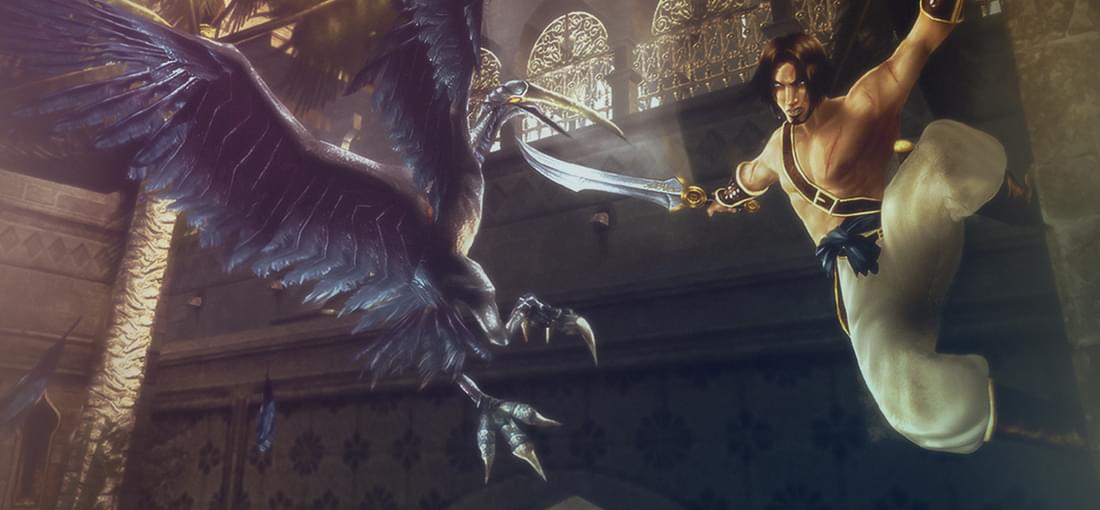
Majestic Arabian palaces? Check. Bloom effects without being obnoxiously hazy and bright to give that storybook feel? Check. Clever puzzles? Check. Silky smooth animation and a vibrant, almost exotic colour palette? Check. This is purely aesthetic feedback, as I never actually beat the game myself. Rest assured though that the gameplay is just as compelling as the presentation (from what little I've played of it myself); but golly this is a pretty game. Prince of Persia: The Sands of Time is a good looking game. It was released in 2003 and already Ubisoft has remade it (sort of) with the cel-shaded 'Prince of Persia' (2008) and the we're-not-a-movie-cash-in-really-we're-not 'Prince of Persia: The Forgotten Sands' (2010), which was kind of like a Sands of Time 1.5 ordeal. To quote Zero Punctuation's Ben Croshaw: "There are things in my fridge that are older than this game." To put it bluntly, The Sands of Time does not need any kind of next-gen, HD remake. It looks just fine; kind of timeless, really. I remember being stunned by the aesthetic presentation of the game when I first booted it up with a puny GeForce 6200 the game shipped with. With aliasing options turned up and the aforementioned bloom enabled, the game is nothing short of visual wonder: from the way the Prince clambers effortlessly from ledge to perch; to the way the sand starts to get in your eyes; and to the sprawling ruins and soaring corridors you'll traverse, this is less a game and more an interactive fantasy (though it has very pronounced "gamey" mechanics at work--all brilliant). So for what it's worth, my two cents is thus: if you're somehow prowling GOG with the intent to find a pretty game (not sure why you'd come here in the first place as few older games age gracefully in the looks department), then you need to add this to your collection, right next to the best of fantasy DVDs and novels.
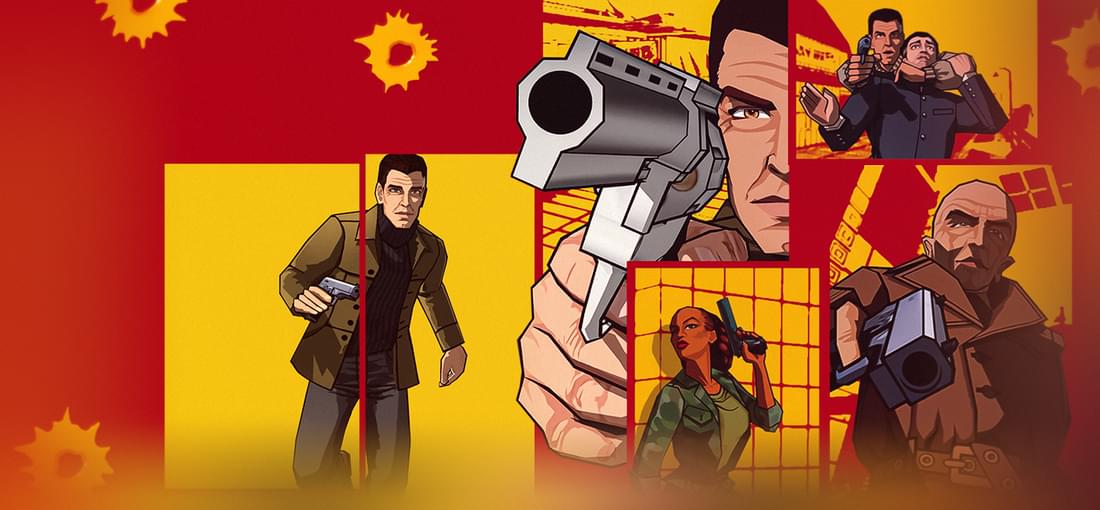
Let's be clear about one thing: this is not a good game. This isn't an unfair jab at the game, because if you're going to pay $6 expecting a good shooter, you won't find it here. What you will get is some slick cel-shaded graphics courtesy of the source 'XIII' comic book, all delivered via the venerable Unreal Engine 2.0. Everything else falls flat. If "top-notch voice acting" simply means "star voice acting", then you've got it here what with David Duchovny and Adam West. Also rapper/actress Eve. But really, your character is so bland and the plot is so generic, what little dialogue is on display here barely registers. Furthermore, David Duchovny isn't exactly known for his, shall we say, dynamic or energized roles. So, his voice just puts a nail in what's already a dull characterization. The gameplay is the worst offender here: bland FPS trappings with bland FPS weapons and bland FPS enemies that stay in one spot or make feeble attempts to advance. Since your aim is pitch-perfect all the time, the encounters are never all that challenging and they play out the same every time. Enemies are further telegraphed with cuts to a comic book-like panel showing their location. I believe this has something to do with XIII's super soldier abilities, or something. I hope you like bashing heads with ashtrays, because other than that little feature, levels are scarce, utterly linear, have little in the way of interactivity and you'll just be shooting from one corridor to the next, with the odd in-game sequence or cutscene to advance the plot. There's little else to break up the monotony. Full disclosure: I couldn't finish this game. I got up to about the prison level and quit. It was that boring. The only recommendation I can give is to watch a Let's Play of this on Youtube or somesuch service instead, but really, you're better off spending your time doing other things, or, you know, simply playing a better game. Hoping to see some other (truly) good old games from Ubisoft's massive back-catalogue.